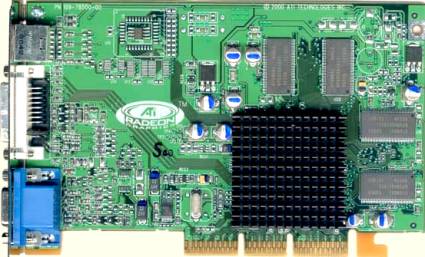Working on Two Fronts: ATi's Radeon VE Handles Two Monitors
Who Wins - The Stock Trader Or The Gamer?
Prestigious products like the Radeon chip are what drives each and every graphics card manufacturer. However, the highest sales turnover does not occur in the high-end or the power gaming segments. In the case of the new Radeon VE graphics chips, ATi is banking less on high performance than it is on a longer list of features. The primary difference between it and its big brother is in the VE variant's ability to control two screens simultaneously. This makes ATi the third company after Matrox and NVIDIA to offer a multi-screen solution. What Matrox calls Dualhead and NVIDIA has named Twinview is being marketed by ATi as Hydravision. The term is not necessarily clear for the end-user, since Hydravision does not suggest multi-screen support at a first glance. Those who have read history might know it: The "Hydra" was the multi headed monster slain by Hercules in Greek Mythology. Be that as it may, Hydravision is an established brand. This motivated ATi to enter into a technological partnership with the original inventor of the product, Appian Graphics . In this partnership, ATi supplies the hardware and integrates Appian Graphics' Hydravision software under a licensing agreement.
The Radeon VE Dual Display Edition is predominately aimed at the OEM market. Banks, investment firms and insurance companies are to be among the bulk purchasers of this solution. However, Radeon VE is also attractive for smaller offices or for private users. Up front - game enthusiasts will not be satisfied with Radeon VE, but for the average user, the card is worth considering. This article will show how the new ATi graphics card holds its own in comparison to its competitors GeForce2 MX Twinview and G450 Dualhead .
Get Tom's Hardware's best news and in-depth reviews, straight to your inbox.
Current page: Who Wins - The Stock Trader Or The Gamer?
Next Page Prices And Competitors
